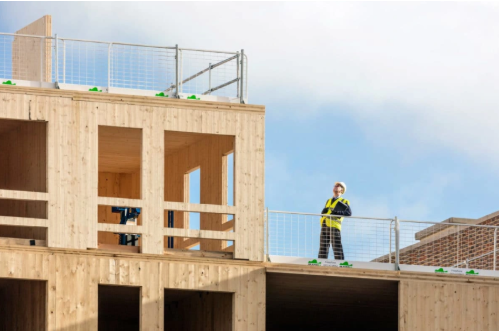Construction isn’t just about putting up walls anymore, far from it. The choices we make in selecting building materials now shape how a structure behaves over the course of decades. Not just its durability, but how it breathes, how it ages, how it interacts with the environment. Many people still assume concrete and steel are the only safe bets. Yet, innovation quietly moves forward.
Some options are obvious, like bamboo replacing timber in certain spaces. Others are subtler materials that self-heal, that store heat, that adjust to temperature without a single electrical wire. Understanding these shifts doesn’t just help builders. Homeowners, architects, and designers all gain tools to make spaces that last. Spaces that cost less to maintain.

Why Traditional Materials Still Matter
It’s easy to think traditional materials are obsolete. Not true. Bricks, for example, aren’t just red blocks. Their thermal mass stabilises indoor temperatures. Timber oak, teak, and older pine resist pests and stay strong for decades. Steel frames? They bend, they flex, they save buildings during earthquakes when rigid materials would fail. Innovation doesn’t always replace tradition. Often, it enhances it. The trick is knowing when to combine old and new, to get efficiency, durability, and design freedom. Mix them right, and the building almost seems alive.
Local Materials and Community Impact
Using local materials is about more than cutting transportation costs. Stone, clay, and timber from nearby regions often suit the climate naturally, shaped by centuries of traditional knowledge. Communities gain, too. Skilled labour stays relevant. Craftsmanship passes down from generation to generation. Economies are strengthened. Even styles evolve, reflecting local resources. The insight here is subtle: choosing materials locally links construction to culture, history, and sustainability. Buildings become not just structures, but expressions of the place they inhabit.
Energy Efficiency Isn’t Just Insulation
Energy efficiency isn’t only about adding insulation. Not at all. Thermal mass, reflective surfaces, and material placement matter. Concrete with higher thermal mass? Reduces temperature swings. Locally sourced bricks or stone? Cuts transportation emissions while stabilising interior climates. Even recycled metals, when used smartly, act as heat sinks. Efficiency is subtle. It’s about knowing how a material reacts with sunlight, airflow, and local climate—decades into the future. The building itself participates in comfort. It’s not just walls; it’s a system.
Challenges Designers Rarely Discuss
No material is perfect. High-performance options can cost more upfront. Some need skilled installers. Building codes? Sometimes they lag behind innovation. Supply chains may be unreliable. This is rarely explained. Choosing new materials isn’t just a technical decision. It’s anticipating installation, regulation, and maintenance. Ignore these factors, and innovation turns into headaches. Even the smartest material can fail if the human and logistical side isn’t considered.
Maintenance as a Material Strategy
How a material ages often tells more than its initial strength. Fibre-reinforced concrete lasts decades and requires little attention. Treated bamboo can endure, flex, and remain useful over the years. But untreated wood, metals exposed to moisture, and some composites demand constant care. Smart construction considers maintenance from the start, not as an afterthought. Hidden costs—time, money, energy—are minimised this way. Buildings age gracefully, performing as intended, instead of deteriorating silently over time.
Looking Forward: Real Trends That Matter
Future materials aren’t just about 3D-printing houses in days. Bio-based composites, recycled concrete, phase-change coatings—they’re quietly reshaping design. Architects now think of walls as active systems, not separators of space. Digital simulations allow testing materials against decades of weather, wear, and human interaction. The trend? Not just “stronger” or “greener.” Smarter. Buildings interact with the environment, respond to human activity, and age gracefully. They don’t just sit there. They live in their context.
Conclusion:
Choosing the right building materials is no longer a background decision. It defines how a building lives, breathes, and ages. From traditional bricks and timber to eco-conscious alternatives and advanced composites, today’s options give designers the power to create structures that are resilient, sustainable, and energy-efficient. But understanding materials isn’t about knowing what exists. It’s about seeing how they behave. How they interact. How they endure. Insight matters more than trendiness. And the smartest buildings? They combine old and new, tradition and innovation, performance and longevity, all in one thoughtful package.

